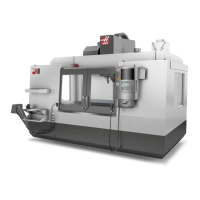5
96-0041 Rev U
July 2010
Cutting uids are best suited for soft materials such as aluminum alloys and
brass.
A good ow of cutting uid should be directed to both sides of cutter whenever
possible.
These are the most common types of cutting uids:
Emulsion (water combined with mineral oils and additives)
• Used for light to moderate machining
Cutting oils (grease or solid additives)
• Limited to slow speed and low feed conditions due to ammability
• Expensive to use
Chemical or semi-chemical uids (synthetic)
• Contain no petroleum oils
• Used for more difcult machining/grinding operations
Workpiece
The more you know about the workpiece, the better you can control the
machining process. As a general rule ask these questions:
• What is the type of metal (alloy or steel)
• Has the part undergone any special process, i.e. case hardening, treated
with additives or heat treated, etc.?
Feed Rate
Feed rate is determined by the required surface nish and cutting force. Ex-
pressed in:
• Inches or millimeters per minute
• Inches or millimeters per revolution
• Inches per tooth
Minimum chip thickness (chip load) is determined by the cutting force.
Maximum chip thickness (chip load) is determined by machine power and tool
design.
Spindle Speed
RPM = speed at which the tooling is turning. The mill can be commanded
in either clockwise (CW) or counterclockwise (CCW) direction. The type of
application or style of tool will usually dictate the spindle direction.
Depth of Cut
The distance the cutter penetrates the workpiece, also referred to as chip load.
This is determined by the following factors:
• Rigidity of the cutter and machine
• Machine capabilities
• Spindle horsepower

